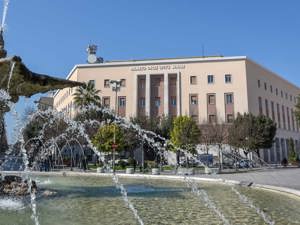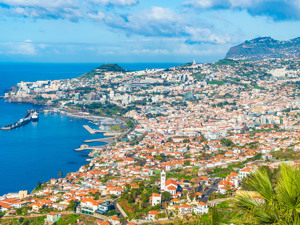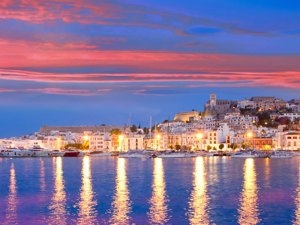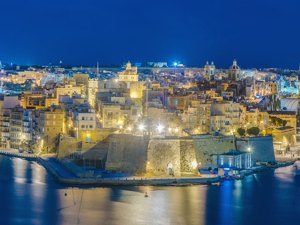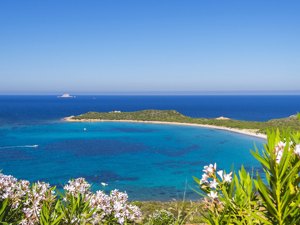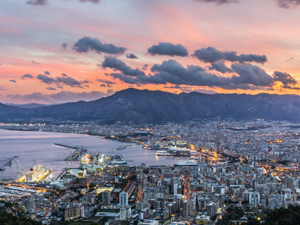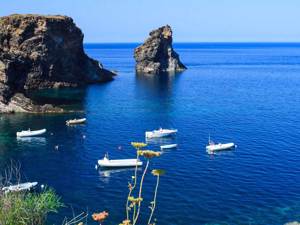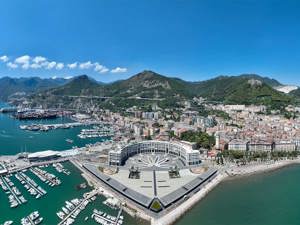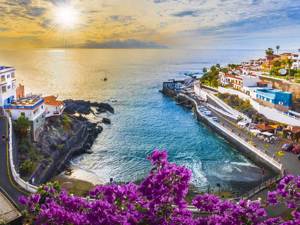The largest island of the dodecanese
A crossroads of culture, bridge between the East and West, and consecrated by Helios, god of the sun, the island of Rhodes was the historical home of the enormous Colossus of Rhodes statue, one of the seven ancient wonders of the world. The city of Rhodes is composed of an old city, which is surrounded by medieval walls and crossed by a main road known as the Street of the Knights of St. John, and a more modern town with a vibrant nightlife.
Roses, palm trees and oleanders make the city appear like an immense luxuriant flower-filled garden. On arriving in Rhodes, the impact of the island’s past and present is immediate. The old fortified city and the Byzantine area are the two faces of the capital.

Rhodes Copyright © Sisterscom.com / Shutterstock
The entire island has many beautiful beaches with crystal clear water and important archaeological sites. In first place is white Lindos village with its imposing Acropolis, and the Valley of the Butterflies, which each summer is overwhelmed with these colourful insects.
The beaches in Rhodes
Faliraki is a very popular tourist resort with a beach of fine sand that extends for more than 5 km. The island’s organised beaches are found in the north-eastern part of the island.
Sandy beaches include Faliraki, Ladiko, Kolimpia, Tsampika, Agathi, Stegna, Kalathos, Vlicha, Lindos, Pefki, Lardos, Prasonissiand Kamiros.
Pebble beaches can be found in Kalithea, Spilies, Afantou, Charaki, Genadi, Kolpos Ialissos, Tholos, Saroni and Fourni Monolithou.
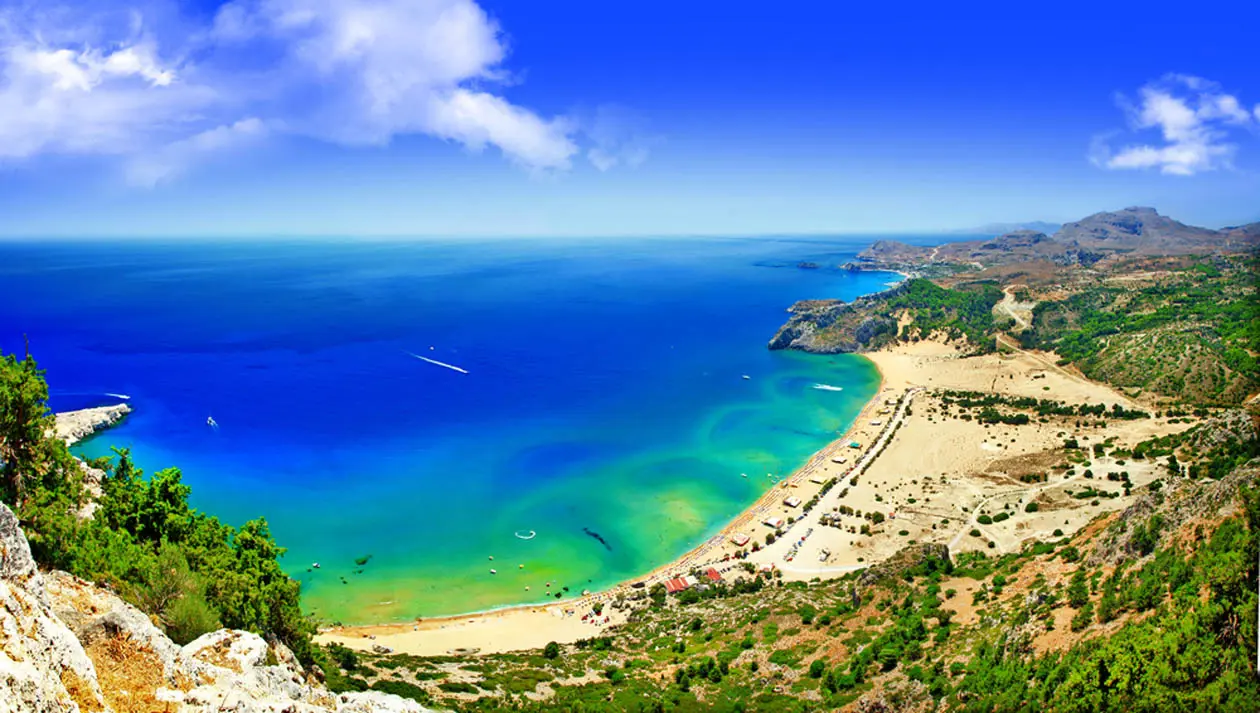
Tsampika beach - Rhodes Copyright © Sisterscom.com / Shutterstock
The island of Rhodes enjoys a wonderfully mild climate with only two seasons: spring and summer. After November, when the first rains begin, the ground becomes carpeted with green vegetation, and by February the whole island has become an immense, wonderful garden. May sees the beginning of summer when the land turns a golden colour, until November when the cycle begins again.
The town of Rhodes has been inhabited for more than 2,400 years. The medieval part of the city was built by the Knights of St. John after they took refuge there in the fourteenth century, before their second and final move to Malta.
The Street of the Knights in Rhodes
The unique Street of the Knights, Ippoton, is a long, steep, paved road, which is lined with fine palaces from the Ottoman period and the “Inns of the Tongues”, the meeting places of the Knights of the Order, who were divided according to their “tongue” or nationality. These inns also served as lodgings for pilgrims passing through Rhodes on their way to Jerusalem.

The Street of the Knights - Rhodes Copyright © Sisterscom.com / Shutterstock
The fifteenth-century Hospital of the Knights houses the Archaeological Museum of Rhodes, which exhibits the magnificent statue of Aphrodite of Rhodes dating back to the 1st century BC. The Palace of the Grand Master of Rhodes, residence of the 19 Great Masters of the Order of Knights, houses two permanent exhibitions on ancient and medieval Rhodes. The Byzantine Chapel in the north-west corner of the old town is well worth visiting. It is surrounded by a garden of orange trees, cypresses and myrtle bushes, and was once the private chapel of the Great Master.
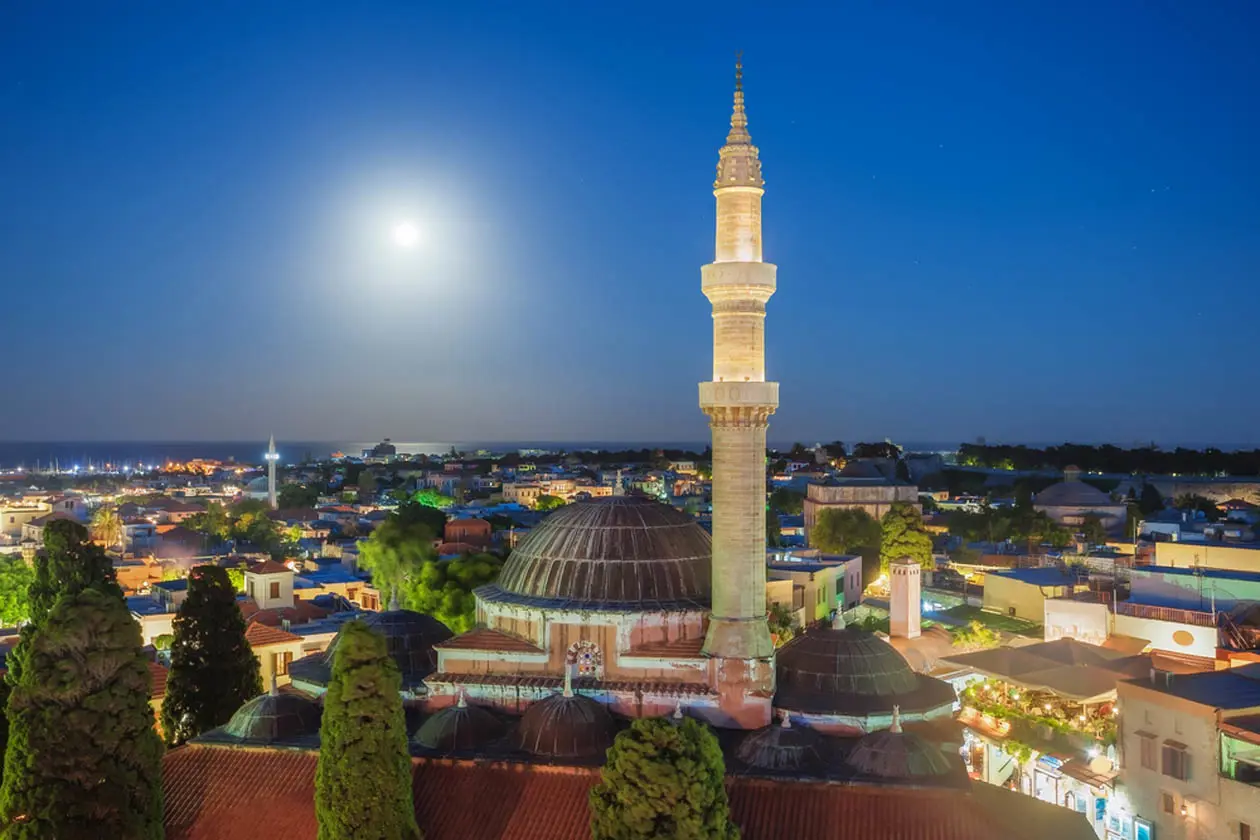
The Suleyman Mosque - Rhodes Copyright © Sisterscom.com / Shutterstock
The mosques in Rhodes
The old town of Rhodes has 14 mosques. The most extraordinary is Rejep Pasha, built in 1588, which has an imposing dome, fountain and delicate minarets. It also has Turkish baths, built in 1765, which were a place of relaxation for oriental nobility and are today open to tourists.

Dolmades rolls Copyright © Sisterscom.com / Shutterstock
The dishes of Rhodes
Rhodes has always been a crossroads of cultures and its cuisine comes from Asia, Europe and Africa.
Today the culinary delights of Rhodes are based on the delicacies of the sea, on salads created by new products such as avocado, rocket and tarragon grown on the island and cooked meats with new modern recipes.
To try the Dolmades rolls: cabbage, stuffed with minced pork and oatmeal. Accompanied by eggs and lemon sauce.
Text by Federica Fusco
Updated by Nicolò Villa
Avion Tourism Magazine
Photo: Copyright © Sisterscom.com, Shutterstock
Copyright © Sisterscom.com. All rights reserved.
Photo: Copyright © Sisterscom.com, Shutterstock
Copyright © Sisterscom.com. All rights reserved.
Video: www.visitgreece.gr
Tourist Board
www.visitgreece.gr
Partnership with Booking.com
Where to sleep in Rhodes

Rhodes Copyright © Sisterscom.com / Shutterstock
Rhodes is a welcoming city and offers different possibilities for accommodation.
To find the ideal hotel and the best offers you can do a search for the stars but also for districts or landmarks.
DISTRICTS
Hotels in the districts
LANDMARKS
Hotels in tourist areas
AIRPORT
Hotels near the airport
where to go in Rhodes
Monuments of Rhodes

Copyright © Sisterscom.com / Shutterstock
THE OLD MEDIEVAL TOWN OF RHODES
The circuit of the walls surrounding the Medieval Town is 4 km long. Along the way, there are numerous turrets and battlements, bridges, moats, and decorative architectural elements. Besides the buildings, erected at the time of the Knights, there is also a number of mosques with their minarets, remnants of the Turkish Occupation. The Medieval Town can be accessed through eleven grand entrances, like Porta Marina (the Sea Gate) one of the most popular.

Copyright © Sisterscom.com / Shutterstock
MANDRAKI
In the Mandraki quarter, located in the small harbour area, there are imposing edifices of the Italian Era that now house public agencies such as the Municipal Theatre and the New Agora (Marketplace).
Well worth a visit: the Governor’s complex; Agios Ioannis (St. John’s) Church with Gothic and Romanesque style features (today Evangelismos Church of the 1925); Agios Nikolaos lighthouse (1464-1467); the three Medieval windmills at the jetty’s edge and Mourat Reis Mosque of the 16th Century.

Copyright © Sisterscom.com / Shutterstock
STREET OF KNIGHTS IN RHODES
The renowned Street of the Knights was faithfully restored to its old Medieval form. The quarters of the various “languages”, the ethnic subgroupings which once comprised the Knights Hospitaller of the Order of St John, are lined up on either side of the street.

Copyright © Sisterscom.com / Shutterstock
PALACE OF THE GRAN MASTER IN RHODES
The Palace of the Grand Master, dating from the 14th Century, is called by the local people “Castello”. It was one of the first buildings constructed by Knights and was completed in 1346. In 1856 it was accidentally razed to the ground by an explosion and was restored in 1939 by Cesare Maria de’ Vecchi, the Italian commander of the Dodecanese Islands.
Museums of Rhodes

Copyright © Sisterscom.com / Shutterstock
ARCHEOLOGICAL MUSEUM OF RHODES
The Archeological Museum of Rodi is housed in the Building of the Hospital of the Knights, dating from the 15th Century, and located in the walls of the Old Town. The particularly important finds on display, refer to a period from the Archaic up to the Roman times on the island.

Copyright © Sisterscom.com / Shutterstock
BYZANTINE MUSEUM OF RHODES
The Byzantine Museum is housed in Panaghìa Tis Nikis Church in the Old Town. In the museum there are murals and icons on display, that date to the Late Byzantine and Post Byzantine period.
Excursions in Rhodes and surroundings

Copyright © Sisterscom.com / Shutterstock
AGIOS STEFANOS/MONTE SMITH HILL
Agios Stefanos or Monte Smith Hill is the acropolis of ancient Rhodes where there are: the Temples of Athena Polias and Zeus Poliefs; the cavernous structures called Nymfaia; the Odeon, that could accommodate up to 800 people; the Temple of Apollo Pythios. Around these monuments stretches the modern city neighbourhood of luxury villas and modern buildings. The sunset view from the top of the hill is amazing.

Copyright © Sisterscom.com / Shutterstock
AFANTOU
Afantou, 18,5 km south-est from Rodi, is one of the oldest villages on the island. There are traditional stone houses, coffee shops, pastry shops and a centuries-old Church of Panagia (the Virgin Mary).

Copyright © Sisterscom.com / Shutterstock
THEOLOGOS
The Theologos village, 8 km south from Rodi, has been attracting tourists lately thanks the famous Valley of the Butterflies. Every year, from June to September, millions of Callimorpha Quadripunctaria butterflies, sporting four black spots on each wing, appear in very large numbers in the valley.
Partnership with GetYourGuide
Discover all tours
You might be interested in
Other destinations
Airports nearby Rhodes























